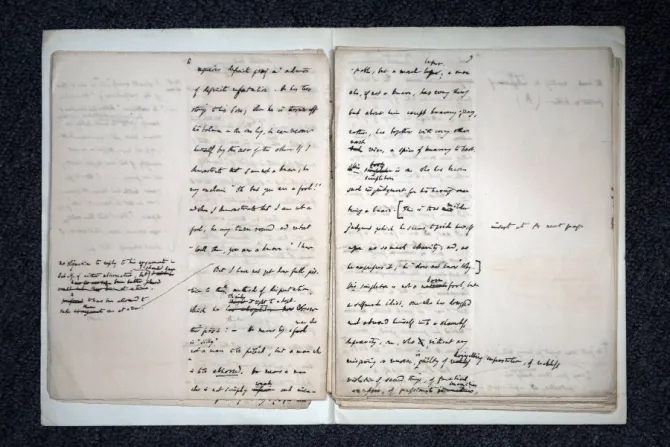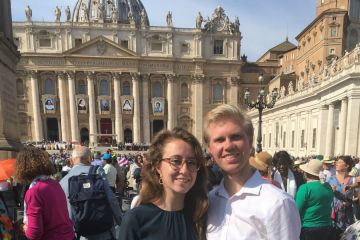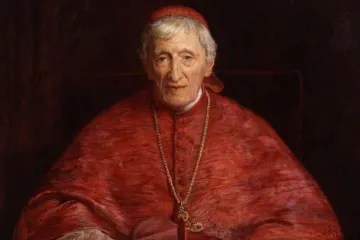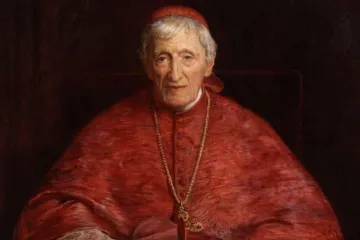
IIIF servers render "slices" of the document selected by the user from the most appropriate resolution layer of the "cake", taking a piece from the high-resolution bottom layer when the user zooms in, or grabbing a slice from a lower resolution layer near the top of the "cake" when the user zooms out.
"So when you zoom in and out you're actually only loading the data that pertains to whatever it is you're looking at, sort of like Google Maps or Google Earth," Michaels explained.
He emphasized that the process is "non-destructive" -- that is, the original images are preserved intact.
To illustrate the technology's power, he summoned up a scan of the original handwritten score of Edward Elgar's 1900 composition "The Dream of Gerontius," inspired by Newman's 1865 poem.
Next to it, he called up the published score. Finally, on the right of his screen, he placed a scan of the manuscript created by a technique known as backlighting, which reveals corrections that Elgar made to the score.
"You can see there's paper glued over top," he said, pointing with his cursor to where the composer had covered up a section of the music. "Scholars can see beneath things in a way that is not possible with the physical manuscript and naked eye alone: what did he change? What is he covering up, or how did the score change? It's really incredible for musicology. We can do the same thing with the handwritten manuscripts as well."
Asked if Newman's spidery handwriting presented a challenge to his team, Michaels said: "We're in the process of building another OCR [optical character recognition] engine using Transkribus, a German platform. It's specifically made for 19th-century handwriting. We can train it to understand Newman's handwriting. Then the accuracy is astounding."
Michaels is especially proud of a feature on the website allowing scholars to search Newman's borrowing record at Oriel College's Senior Library in Oxford.
"We can compare what Newman was writing at a specific time with what he was reading. How often do you get a chance to do that?" he asked.
He recalled that a researcher was recently able to discover what works of St. Thomas Aquinas Newman was reading at a particular time. This helped the academic to see whether Aquinas influenced Newman's views on a specific topic.
(Story continues below)
Subscribe to our daily newsletter
"It's really valuable to Newman scholars, so that they can understand what was behind what he was writing. There's not always a smoking gun, but it sure helps," Michaels commented.
The Digital Collections do, of course, contain Newman's own published works, including such monuments as his autobiographical "Apologia Pro Vita Sua" and his "Essay on the Development of Christian Doctrine."
Michaels contrasts the crisply rendered books on NINS Digital Collections with those on the popular Newman Reader website (also owned by NINS).
He said: "The Newman Reader is old school. It looks like it was done in 1995, even if it served a great need. It's an HMTL version of Newman's works and there are a lot of mistakes in it. NINS Digital Collections, on the other hand, shows the original published works. So instead of reading static HTML documents, you can read, search, and zoom inside the real thing."
A search window on the NINS Digital Collections website lets scholars examine books for particular words or phrases.
"This was a significant thing for us to add -- and you don't see this often with IIIF collections. That is, we can do full text searches across our entire inventory. It searches millions of words," said Michaels.






